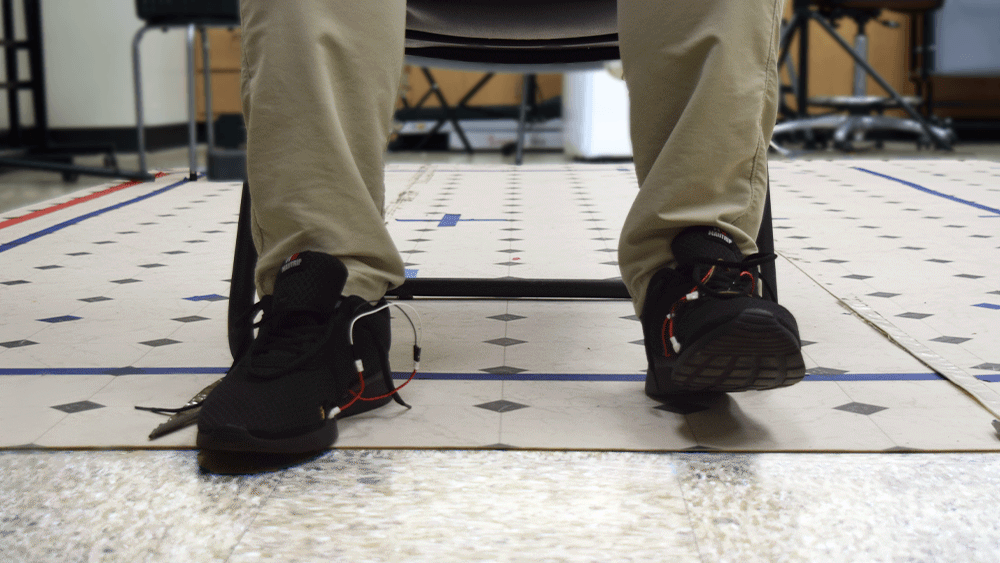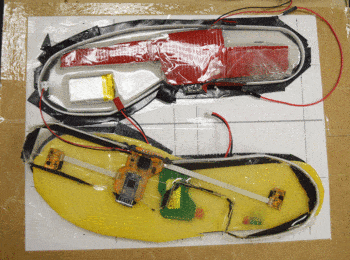Researchers have developed a toe-tapping test for patients with Parkinson’s disease that gathers information from smart shoe insoles.
The results from the test can help determine a patient’s falling risk while providing insights such as symptom progression and treatment suggestions.
Out of every 200 people, three live with Parkinson’s disease. The progressive disorder affects the central nervous system and currently has no cure. Parkinson’s disease can cause mobility issues, increasing patients’ risk of falling.

“We have developed a lightweight, easy-to-install, self-powered insole you can place within any kind of shoe, as well as a correlating test that can accurately determine fall risk,” says Ya Wang, associate professor in the mechanical engineering department at Texas A&M University.
“For people living in rural or underdeveloped areas or people who may not feel comfortable taking a walking test, our technology presents a solution to monitor their disease progression.”
Parkinson’s disease can have a wide range of symptoms, such as tremors, muscle stiffness, or degrading balance and coordination. Symptoms can differ from patient to patient, making it difficult to diagnose and treat and often results in extensive medical visits and medications.
“There are symptoms you can observe using your naked eyes, such as patients taking smaller steps or imbalance,” says Wang. “However, many cannot be seen by using the current tests and technology available. This inability to accurately characterize symptoms takes a physical toll but can also cause psychological suffering stemming from pain and immobility.”

Professionals using a combination of walking and toe-tapping tests where the patient’s movements are closely observed can diagnose Parkinson’s disease. The symptoms are analyzed using the Unified Parkinson’s Disease Rating Scale (UPDRS).
However, this method presents risks to patients struggling with mobility, both while commuting to the physician’s office and while taking the test itself. Additionally, this does not consider the subtle symptoms that are not visual or may not appear during the walking tests.
“Experiments with patients show that when you ask them to walk, they are usually very nervous, causing differences from their normal walk,” Wang says. “This can be a source of confusion when diagnosing walking behaviors and requires a long period of data.”
To combat this problem, the researchers developed a toe-tapping test that uses smart technologies capable of compiling significant amounts of data, uncovering information that can help diagnose patients, characterizing their symptoms, and, over time, showcasing disease progression.
The test begins by inserting the wearable insole into any shoe. As the patient completes a series of toe-tapping patterns, the smart insole collects and transfers data in real-time to an accessible phone application. The more tests a patient completes, the more elaborate and accurate the data becomes.
“From just toe-tapping, the application can tell whether a symptom is being managed appropriately and whether the management, such as physical therapy or medication, is effective,” says Wang. “If the management is not appropriate or effective, the application can suggest a doctor’s visit, recommend an increase or decrease of medication dosage and/or frequency, or provide insight into whether new medication and previous treatments worked or did not work.”
The key finding from the study is that toe-tapping tests can yield results, almost as accurately as the walking test, that indicate a patient’s risk of falling according to the UPDRS scale.
Because the test can be completed at home with fewer resources, and the information gathered is readily available to the patient, it provides an avenue for those with Parkinson’s disease to receive essential medical care at inexpensive costs through a safer and less taxing process.
“We are providing a way for patients to easily comprehend how their symptoms and medications are correlated while outlining risks in one easy-to-use platform,” says Wang. “In the future, we want to use this technology to develop preventative measures installed within the sensors to help ensure their safety.”
The study appears in IEEE Sensors Letters.
Source: Michelle Revels for Texas A&M University



